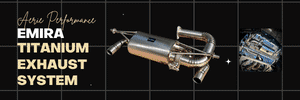Unicorns. Cars so rare that most people have never seen one in real life, let alone driven one. Limited runs, special editions and special projects. Cars ahead of their time or at the wrong time. Sometimes cars that didn’t sell well when launched but with hindsight have been recognised for their greatness.
Cars developed with a single-minded purpose, to be the best they could be.
Lotus have built a few of these. The Esprit Sport 350, Elan 26R, 340R, 2-11 and 3-11. I could try and argue my S1 Exige falls into this category, with a focus on purity of driver engagement, analogue controls, no driver aids and minimal creature comforts. With only 604 cars built it’s rare, but is it too many to count as a unicorn?
In 2015, Lotus CEO Jean Marc Gales instigated a return to a core Lotus principle of “simplify and add lightness” and established the Lightness Lab. Every component was assessed on whether it could be lightened, removed or combined with another to serve a dual purpose.
One outcome of that was a car that didn’t so much shave weight as take an axe to it. A car clothed in carbon panels that was 116kg or 8% lighter than its showroom sibling. A showcase for Lotus ride and handling expertise, developed in partnership with Ohlins and motorsport gurus MGR. Aerodynamic features that give more downforce than a 1970s Lotus F1 car. And not just at the 190mph top speed but also useable downforce at fast road speeds.
Only 58 cars were built. Just 23 are in the UK. Most are long-term keepers and those that come up for sale usually change hands without being advertised. The majority were registered in 2018-19, built to each customer’s individual specification. Just one was registered in 2020, the last car, commissioned not to a customer spec but by Lotus Head of UK Sales Scott Walker. The only one in a special pearlescent paint.
Unicorns do exist.
I'm very excited to welcome to the garage, the last car to be registered and the only Liquid Yellow Evora GT430 in the world.




Cars developed with a single-minded purpose, to be the best they could be.
Lotus have built a few of these. The Esprit Sport 350, Elan 26R, 340R, 2-11 and 3-11. I could try and argue my S1 Exige falls into this category, with a focus on purity of driver engagement, analogue controls, no driver aids and minimal creature comforts. With only 604 cars built it’s rare, but is it too many to count as a unicorn?
In 2015, Lotus CEO Jean Marc Gales instigated a return to a core Lotus principle of “simplify and add lightness” and established the Lightness Lab. Every component was assessed on whether it could be lightened, removed or combined with another to serve a dual purpose.
One outcome of that was a car that didn’t so much shave weight as take an axe to it. A car clothed in carbon panels that was 116kg or 8% lighter than its showroom sibling. A showcase for Lotus ride and handling expertise, developed in partnership with Ohlins and motorsport gurus MGR. Aerodynamic features that give more downforce than a 1970s Lotus F1 car. And not just at the 190mph top speed but also useable downforce at fast road speeds.
Only 58 cars were built. Just 23 are in the UK. Most are long-term keepers and those that come up for sale usually change hands without being advertised. The majority were registered in 2018-19, built to each customer’s individual specification. Just one was registered in 2020, the last car, commissioned not to a customer spec but by Lotus Head of UK Sales Scott Walker. The only one in a special pearlescent paint.
Unicorns do exist.
I'm very excited to welcome to the garage, the last car to be registered and the only Liquid Yellow Evora GT430 in the world.







